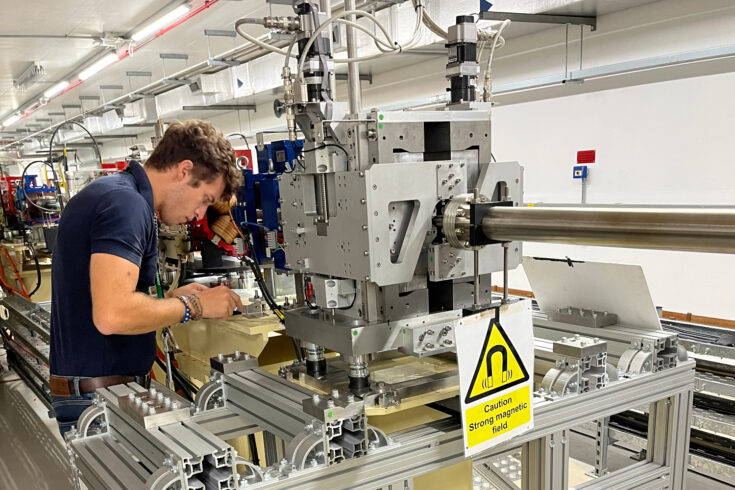Testing has begun at Diamond Light Source for an energy-saving magnet, designed and built by the Science and Technology Facilities Council (STFC), including members of the Cockcroft Institute (CI), for our next generation of particle accelerator.
Particle accelerators are responsible for some of our greatest scientific breakthroughs in history, such as the discovery of the Higgs boson at CERN’s Large Hadron Collider.

The world needs these powerful and highly complex machines to enable research that is essential for developing important green technologies, such as better solar cells and more efficient batteries.
One particle accelerator can use thousands of high-power, tuneable electromagnets to bend and focus a beam through the machine, close to the speed of light. However, these consume vast amounts of electricity to operate and cool.
Designed by scientists and engineers at STFC’s Daresbury Laboratory, at Sci-Tech Daresbury, the zero power tuneable optics magnet (ZEPTO) is a permanent, tuneable magnet that consumes zero electrical power.
ZEPTO offers the same flexibility as an electromagnet but does not require power to produce a magnetic field, which could save dramatically on the cost and scale of future particle accelerators.
Energy consumption and the associated financial and environmental cost are key challenges faced when building a next generation particle accelerator.
ZEPTO’s successful commissioning at Diamond, the UK’s national synchrotron accelerator, kicks off a year-long demonstrator aiming to confirm that it is as reliable and robust as a conventional electromagnet.
During the test, 1 magnet is expected to save an estimated 136kg of carbon dioxide compared with a conventional electromagnet, with the carbon payback anticipated to be within a year of operation.
CI expert and Director of STFC’s Accelerator Science and Technology Centre Professor Jim Clarke, who led the design and development of the ZEPTO magnet, said:
“The development of the ZEPTO magnet confirms STFC’s ability to design and build the brand-new technologies required to build the world’s next generation of research facilities more affordably and sustainably. I’m so proud to see it installed and running successfully for the first time on an operational facility. This is a significant step in the development for this innovative magnet.”
The ZEPTO magnet, developed under STFC’s Proof of Concept Fund, is part of STFC’s growing Sustainable Accelerators programme. It is just one demonstration of STFC’s commitment to making accelerators sustainable.
Professor Clarke added: “It’s hugely exciting to be applying our expertise to make particle accelerators environmentally and financially sustainable, for the benefit of our environment and economy. This important project is just one example of how accelerator scientists, engineers and technicians at STFC are supporting STFC’s aim to be net zero by 2040.”
This article is based on an original article published on UKRI news https://www.ukri.org/news/new-energy-saving-super-magnet-gets-first-test-run/
